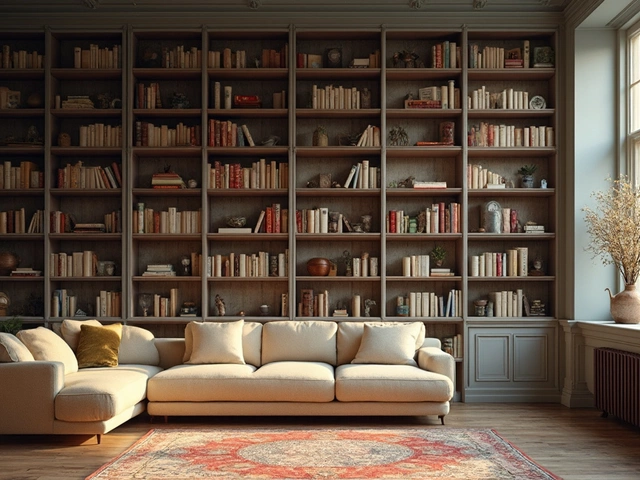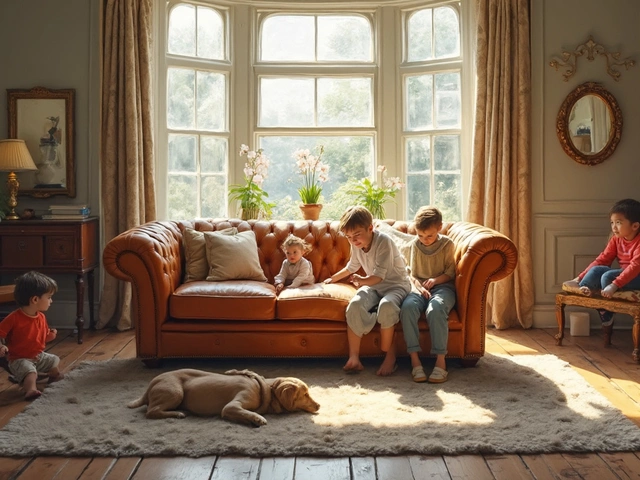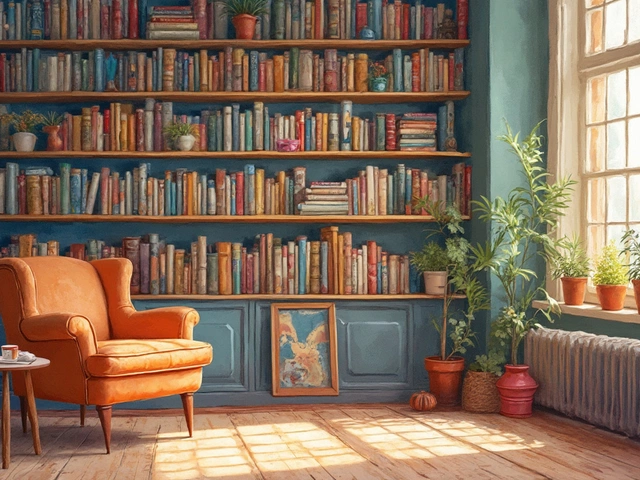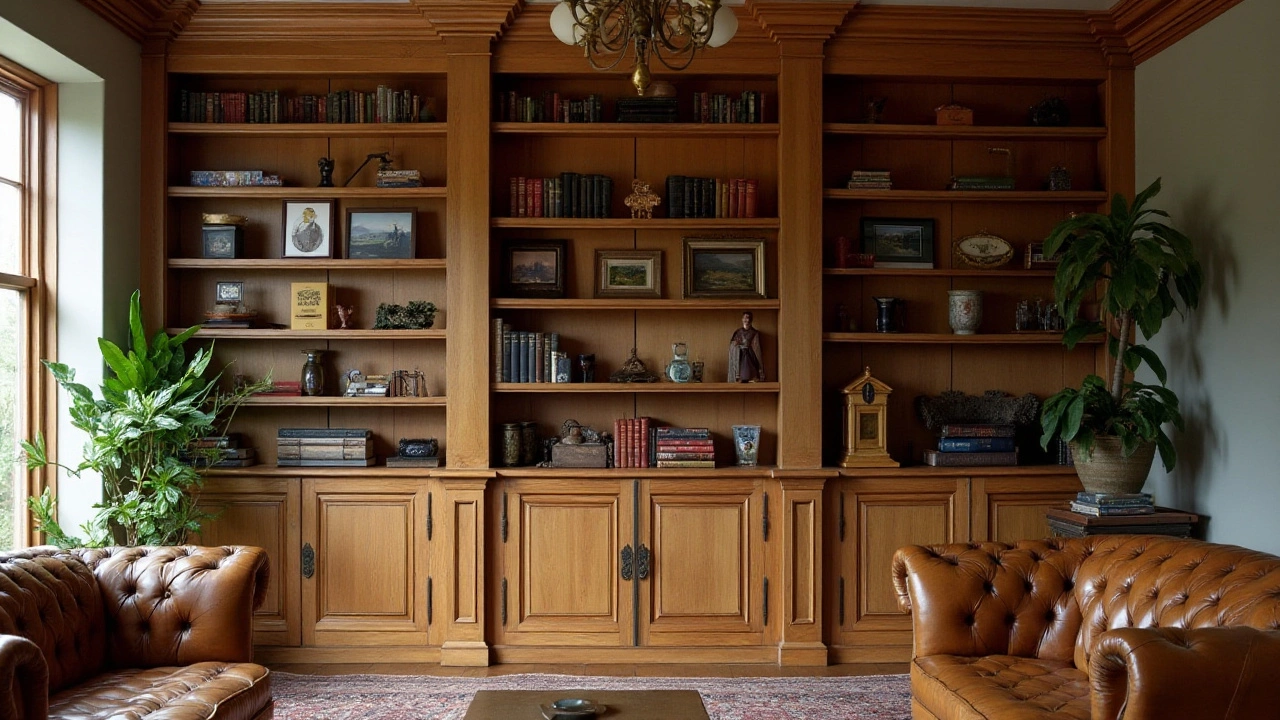 22
Dec,2024
22
Dec,2024
Finding the perfect wood for your bookshelf can transform a simple piece of furniture into a cornerstone of your living space. The decision goes beyond aesthetics; it affects functionality and strength. Each type of wood, from dense hardwoods to lighter alternatives, brings its characteristics to the table, influencing how well your bookshelf will endure the test of time.
While oak's timeless appeal and robust nature make it a favored choice, other woods like maple or pine offer different textures and hues, catering to diverse tastes and decor styles. Understanding the unique properties of each wood helps tailor your choice to both your practical needs and aesthetic preferences, ensuring your bookshelf not only supports your beloved books but also enhances your home's ambiance.
- Importance of Choosing the Right Wood
- Popular Wood Types Explained
- Comparing Hardwood and Softwood
- Environmental Considerations
- Tips for Selecting the Perfect Wood
Importance of Choosing the Right Wood
When embarking on the journey of crafting a bookshelf, selecting the right wood is akin to picking the foundation for a house. The type of wood you choose directly affects not just the aesthetic appeal but also the functional lifespan of the bookshelf. Various aspects such as wood density, grain pattern, color, durability, and weight capacity must be considered to ensure the finished product complements your living space and fulfills its fundamental purpose effectively.
Hardwoods like oak and maple, often hailed for their robustness, offer significant advantages in strength and longevity. These woods tend to boast higher density, which means they can support more books without sagging. Oak, with its intricate grain and warm tones, provides an invitingly classic look that easily blends with most home decor. Maple, on the other hand, offers a smooth and fine texture, making it ideal for a sleek, modern finish.
Softwoods such as pine provide a different set of attributes. They tend to be lighter, making them more manageable if you foresee a need to move your bookshelf around. Pine's subtle knots and lighter color can add a rustic charm, and it often comes at a more affordable price point than its hardwood counterparts. However, one must consider the trade-off between price and durability, as softer woods may dent or scratch more easily over time.
The environmental impact of your wood choice cannot be understated. Opting for sustainably sourced wood not only aids in preserving forests but also ensures that your bookshelf leaves a minimal carbon footprint. Products certified by bodies like the Forest Stewardship Council (FSC) guarantee responsible forestry practices. A BBC report highlights that "sustainable timber is becoming increasingly accessible, reducing the environmental cost of furniture production." Considering such factors at the beginning of the process can align your bookshelf project with eco-conscious principles.
According to renowned furniture designer Charles Webb, "A bookshelf isn't just a piece of furniture; it's a personal statement. The wood you select tells a story about your values and what you cherish most in your living space."Given these considerations, it becomes evident that the choice of wood extends beyond mere preference. It becomes an exercise in balancing aesthetics, care for the environment, and the practical demands of daily use. Making an informed decision in this first step ensures that your bookshelf will stand as a testament to personal style and conscious living.
Popular Wood Types Explained
When it comes to crafting a bookshelf, choosing the right wood is essential. Understanding the properties of various wood types can transform this essential piece of furniture from functional storage to a cherished part of your home's interior. Among the most popular options is oak, a classic choice favored for its strength and timeless look. Oak offers a beautiful grain pattern and a natural resilience that makes it the go-to option for sturdiness and longevity. Its dense and robust nature can support heavy volumes with ease, and its natural beauty can adapt to traditional or modern spaces. Many woodworkers rave about oak's versatility, which allows it to be stained or painted according to the homeowner's style.
Another favorite is maple, noted for its light color and smooth grain, making it an excellent choice for those who prefer a sleek, refined finish. Maple has the added benefit of exceptional hardness, which translates into great durability. Its fine grain provides a smooth surface for delicate designs and finishes, appealing to both minimalist aesthetics and intricate creativity. If maple could speak, it would whisper tales of countless carpenters who trust its strength for their delicate, yet sturdy, creations. Then there's cherry wood, beloved for its rich reddish hue that deepens with age, offering a warm and luxurious ambiance that makes any bookshelf a centerpiece.
In contrast, pine is the choice for those who require a more budget-friendly option without sacrificing beauty. Pine's light color and characteristic knots give it a rustic charm perfect for cottage-style interiors or contemporary settings looking for a touch of nature. It’s softer compared to other woods, which means it’s easier to work with, though it might not hold up as well under heavy weight compared to denser woods. Pine responds well to stains and paints, enabling a range of finishes that can surprise even the most jaded decorator. For eco-conscious buyers, bamboo, often classified alongside woods due to its similar applications, offers another sustainable option, wielding a striking appearance and rapid renewability.
"The type of wood you choose for a bookshelf influences not just the functionality, but the overall feel of the room," says renowned Australian interior designer Tim Yip. "Selecting the right wood transforms your bookshelf from just a piece of furniture into a piece of art."Each wood type presents unique benefits and some limitations, which should be weighed against the aesthetic preferences and practical needs of the individual. A thoughtful selection ensures that your bookshelf will serve both as a functional storage solution and an elegant addition to any room.
| Wood Type | Color | Durability | Cost |
|---|---|---|---|
| Oak | Moderate to Dark | High | Moderate to High |
| Maple | Light | Very High | High |
| Cherry | Reddish | Moderate | Moderate to High |
| Pine | Light | Low to Moderate | Low |
| Bamboo | Varies | Moderate | Moderate |
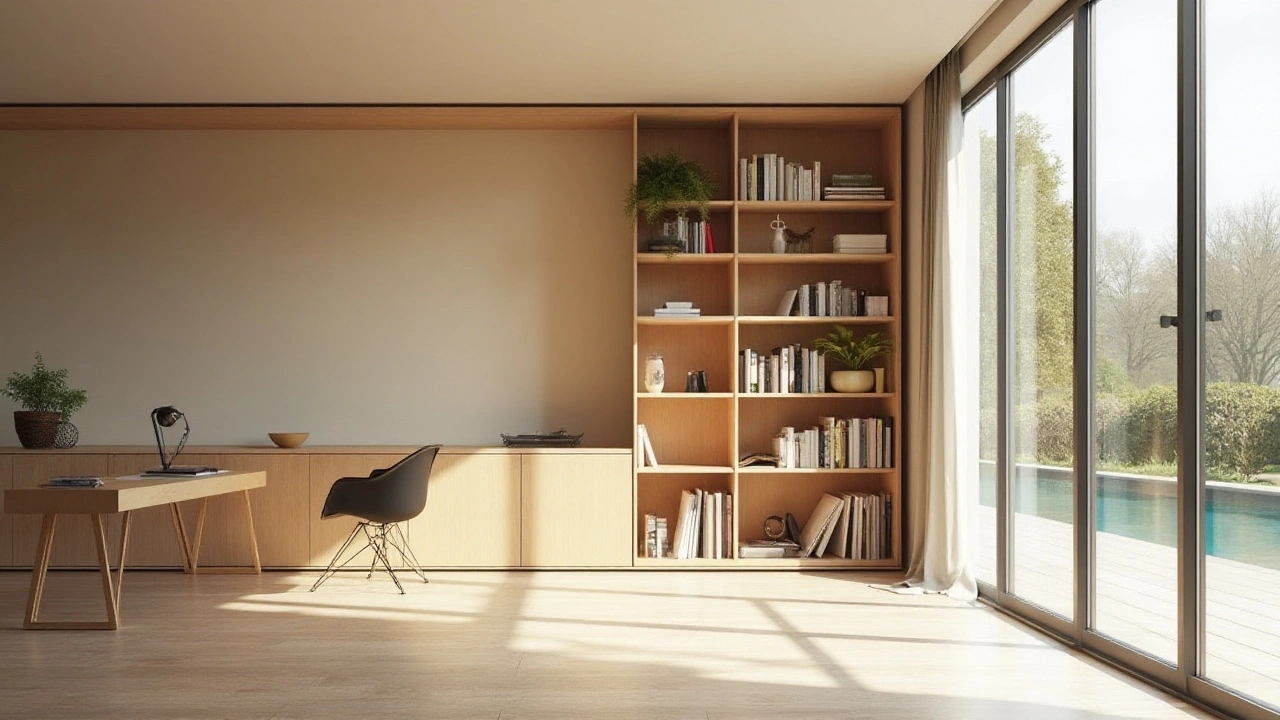
Comparing Hardwood and Softwood
When stepping into the world of woodworking and furniture crafting, understanding the difference between hardwood and softwood is a vital part of making informed choices. Despite what the names might suggest, hardness isn't the sole factor distinguishing them; rather, it's about the type of trees they're derived from. Hardwoods come from deciduous trees that shed their leaves annually, such as oak and maple, while softwoods hail from coniferous, evergreen trees, like pine and cedar.
The attributes of these wood types reveal their suitability for crafting a sturdy bookshelf. Hardwoods are generally denser, which translates to better durability and strength, ideal for bookshelves that need to hold considerable weight. Oak, for instance, not only offers longevity but also an attractive grain pattern. On the other hand, softwoods, being lighter and generally easier to work with, could be more budget-friendly options for those who might move often or plan to adjust their furniture setup periodically.
A fascinating fact about hardwoods is their diversity, ranging from the classic appeal of cherry wood to the exotic nature of teak, each offering a unique texture and color. Softwoods have their own charm; despite their namesake, some varieties, like douglas fir, are quite resilient. Many choose softwoods not just because they're easier on the pocket but also due to their natural resistance to moisture, depending on the species. There's also an environmental aspect to consider, as softwoods tend to grow faster and are more readily available, impacting the ecological footprint of producing bookshelf wood.
For those wondering how these woods compare under different circumstances, durability can be the deciding factor. An oak shelf, known for its robustness, might be perfect for a long-term or permanent installation boasting heavy tomes. Yet, if ease of shaping and finishes that suit modern aesthetics is more desirable, then a softwood like pine exhibits flexibility in design and style, often preferred for a quick refurbishing or seasonal updates.
"There's an art to selecting the right wood – it requires an understanding of both the material's functional capabilities and its role within a living space," says renowned woodworker Tom Johnson, encapsulating the thoughtful process behind wood selection for furniture.
A quick rule of thumb for budget considerations: hardwoods generally incur higher costs due to their longer growth periods and complex processing requirements. In contrast, softwoods might appeal to those who appreciate both economic and practical benefits without compromising too much on the piece's integrity. As you navigate your choices, remember that the goal is to harmonize the character of the wood with the demands of your lifestyle and the look you aim to achieve within your home.
Environmental Considerations
When contemplating the best wood for crafting bookshelves, it's essential to consider the environmental impact. The choice of wood not only affects your home's aesthetics and utility but also has broader implications on forests and ecosystems. Ethical sourcing practices play a crucial role in sustainable woodworking. Ensuring that the wood comes from responsibly managed forests helps maintain biodiversity and mitigate climate change. Organizations like the Forest Stewardship Council (FSC) certify woods that meet strict environmental and social standards. Opting for FSC-certified wood may cost a bit more, but it guarantees that the wood is harvested sustainably.
Deforestation and illegal logging pose significant threats to global biodiversity. The Amazon rainforest, often referred to as the 'lungs of the planet,' has been drastically impacted by unsustainable logging practices. By choosing sustainably sourced bookshelf wood, you contribute to the fight against such activities. For instance, in Australia, initiatives like the Responsible Wood Standard provide local solutions. They ensure timber products meet the specified criteria for sustainability while supporting local and indigenous communities. Exploring reclaimed wood is another environmentally friendly option. This not only reduces waste but often gives the wood a unique charm and history, turning each bookshelf into a conversation piece.
Reclaimed wood comes from a variety of sources—old barns, factories, or even shipyards—each with its own tale to tell. This kind of recycling reduces the demand for newly harvested woods and often boasts an exquisite patina and unmatched texture. However, one must ensure these materials are free from harmful chemicals or treatments, especially if they were previously used in industrial settings. Another important aspect is the carbon footprint associated with wood transportation. Locally sourced timbers significantly cut down on emissions compared to imported varieties. Oak and maple in particular, available locally in many regions, often offer an excellent balance between beauty, strength, and environmental impact.
According to the United Nations Environment Programme, forest cover globally continues to shrink, highlighting the need for conscious consumer choices. Buying locally not only reduces the carbon emissions related to transport but also supports local economies and carpentry artisans.
"Sustainability is not a trend, but a quest for those who wish to harmonize with nature," posits the renowned environmentalist David Suzuki. His words remind us of our responsibilities as consumers. Even the choice of finishes and wood treatments on bookshelves can have environmental ramifications. Opting for water-based varnishes or natural oils over solvent-based ones can be kinder to both indoor air quality and the environment.
Embrace these practices and encourage others by showcasing your sustainably crafted bookshelf. Discussing the story behind your choice can influence friends and family to consider their own environmental footprints. By investigating these aspects, you’re making an informed, conscientious decision that's good for your home and the planet. The next time you choose wood types for shelves, remember it's more than just aesthetics and durability; it's about making a positive impact while enjoying a beautiful piece of furniture.
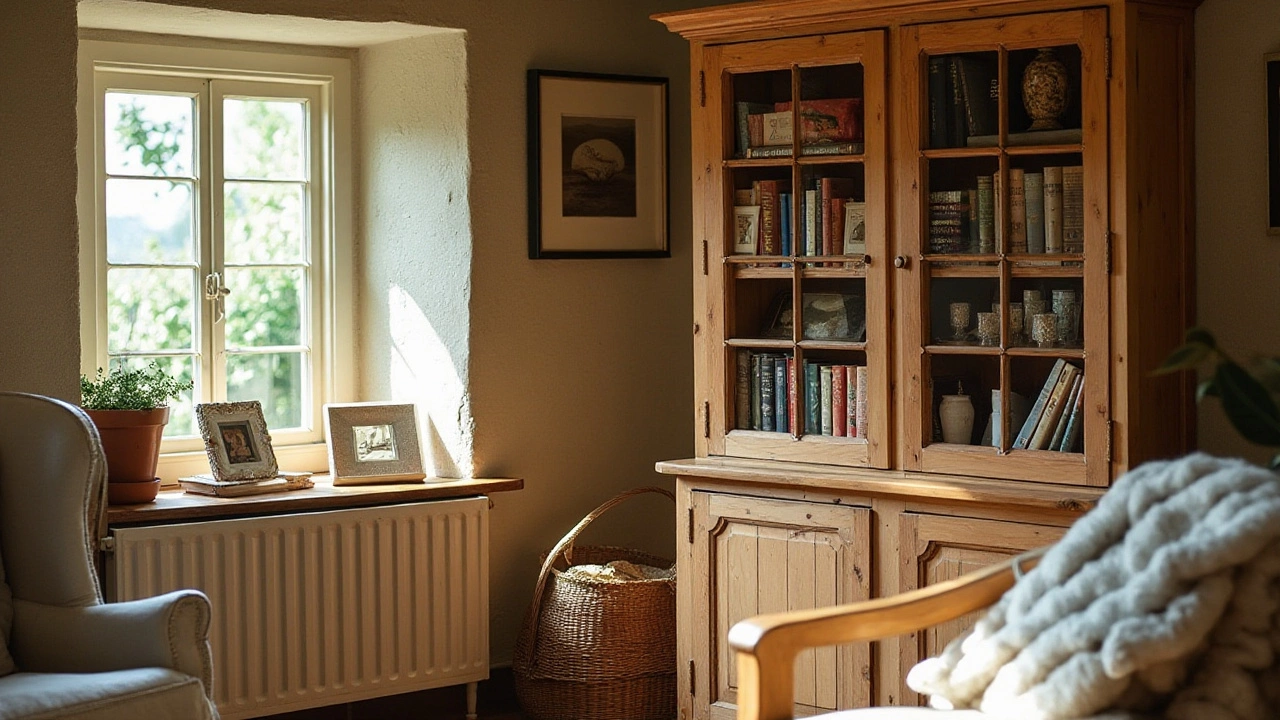
Tips for Selecting the Perfect Wood
Choosing the right wood for your bookshelf is like finding the ideal partner for your home decor. It's about balance, where beauty meets functionality. The first thing to consider is what you’re expecting from your bookshelf. Are you looking for something that will hold an extensive collection of heavy volumes, or do you value a light, airy display of a few treasured items? Such questions will guide your decision. Hardwoods like oak and maple are renowned for their durability and can bear considerable weight over time without warping or bending. Meanwhile, softer woods like pine offer a lighter structure, making them easier to move and adjust within your room, along with a generally lower price point, which might be appealing if you're budget-conscious.
Another important factor is the visual appeal. Each wood type carries its natural allure. Oak, known for its formidable strength, exhibits beautiful grain patterns that can complement a traditional or rustic setting. Its earthy tones can add warmth and character to a room. Maple, on the other hand, offers a smoother finish with a refined elegance, making it ideal for modern minimalistic spaces. Pine provides a rustic charm that works wonders in country-style homes. Consider the existing color palette and theme of your living room before making a choice. Matching the wood to other elements in the room, such as furniture or flooring, can create a harmonized look that enhances the ambiance.
Environmental sustainability is another facet that should not be overlooked. In today's world, where we are becoming increasingly conscious of our ecological footprint, selecting woods sourced from responsibly managed forests is crucial. Look for certifications from councils like the Forest Stewardship Council (FSC), which ensure that the wood has been harvested in an eco-friendly and sustainable manner. A little research here can turn your furniture-making practice into a green initiative. There's a growing interest in reclaimed wood as well, which not only possesses a unique character due to its age and history but also supports recycling efforts, thereby reducing environmental impact. To quote a well-known architect, "Using reclaimed wood is like giving a second life to the materials, imbued with stories and timelessness.",
No less significant is your skill level and woodworking experience. Some woods are easier to work with than others, which can be a determining factor if you're planning to DIY your bookshelf crafting. Woods like pine are softer, allowing for easier cutting and shaping, which might be more forgiving for beginners. However, harder woods might require more specialized tools and experience to manipulate effectively, but their strength and longevity can often be worth the extra effort. Consider whether you have the necessary tools and experience or if you would prefer a simpler project with easily manageable materials.
Lastly, cost can be a deciding factor. While hardwoods can sometimes be more expensive upfront due to their durability and aesthetic appeal, they may offer better long-term value as they are less prone to damage and wear over time. However, if your budget is tight, you might want to explore options like engineered woods or veneers that can mimic the look of real wood without the associated costs. A balance between budget and desired outcome is key in making the best choice for your home. Understanding these aspects will put you in a good position to select the perfect wood, ensuring your bookshelf is both beautiful and practical, serving you well for many years to come.
